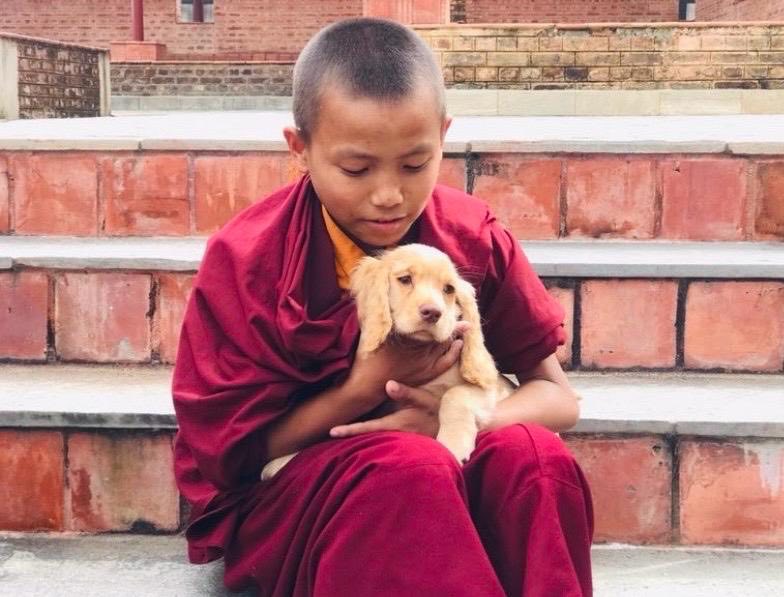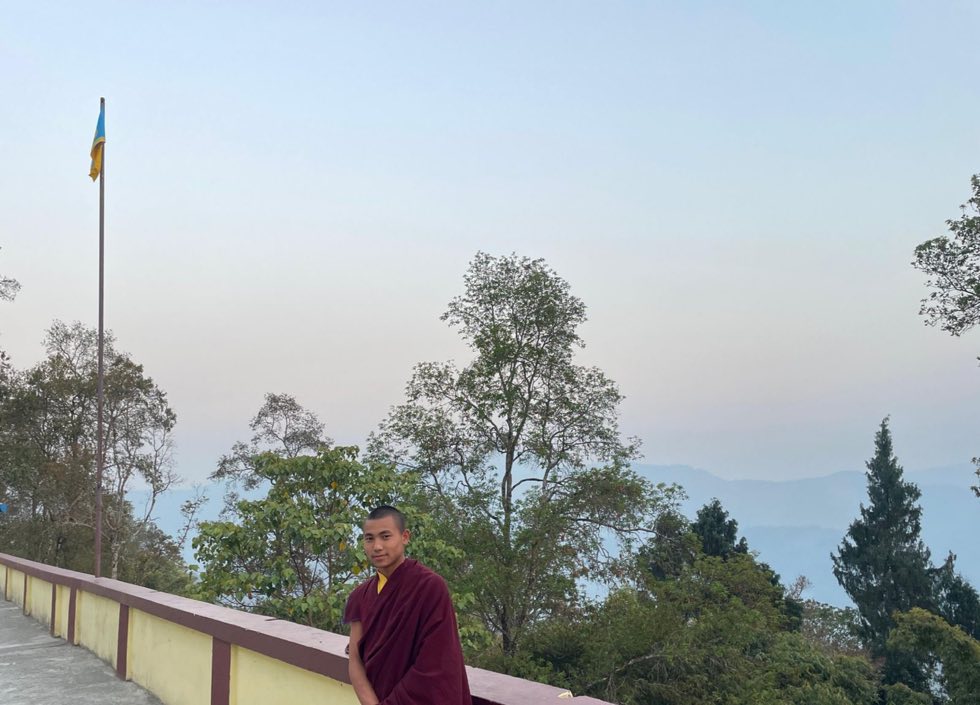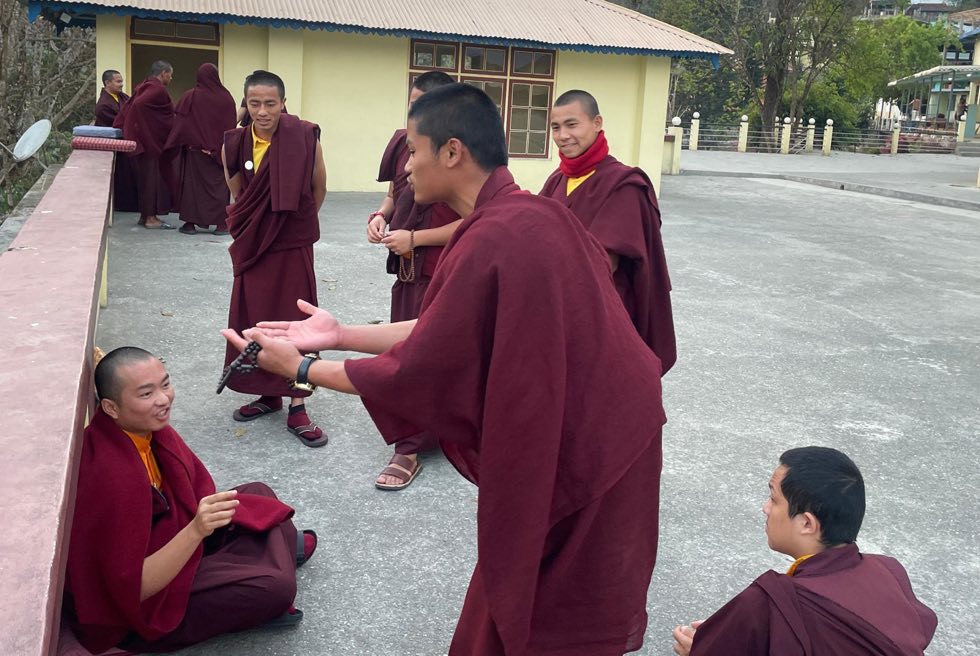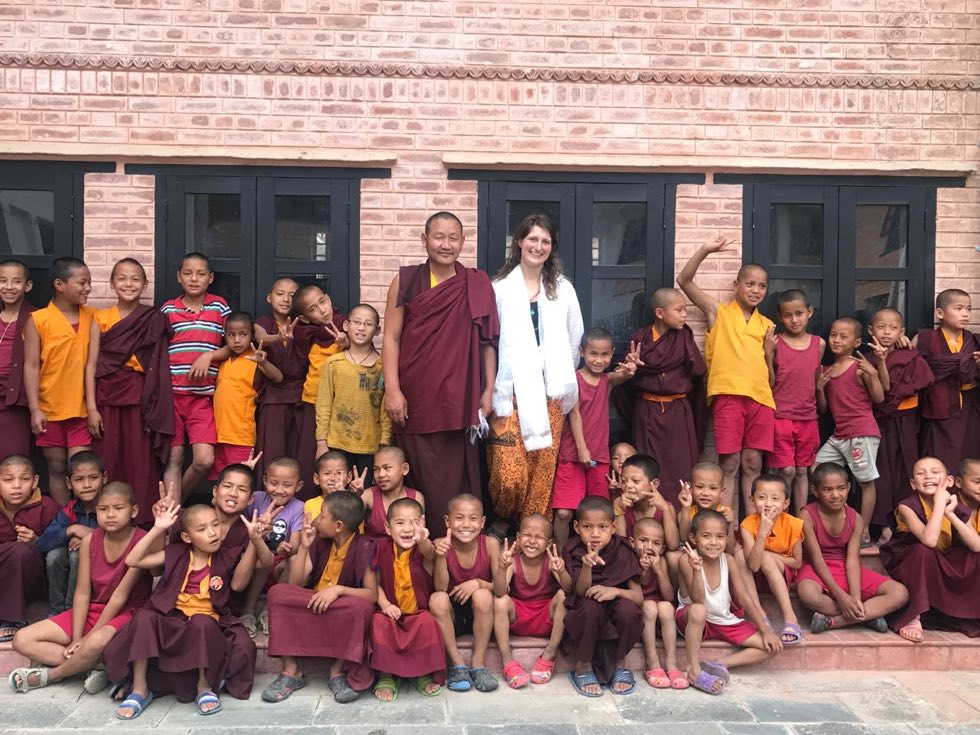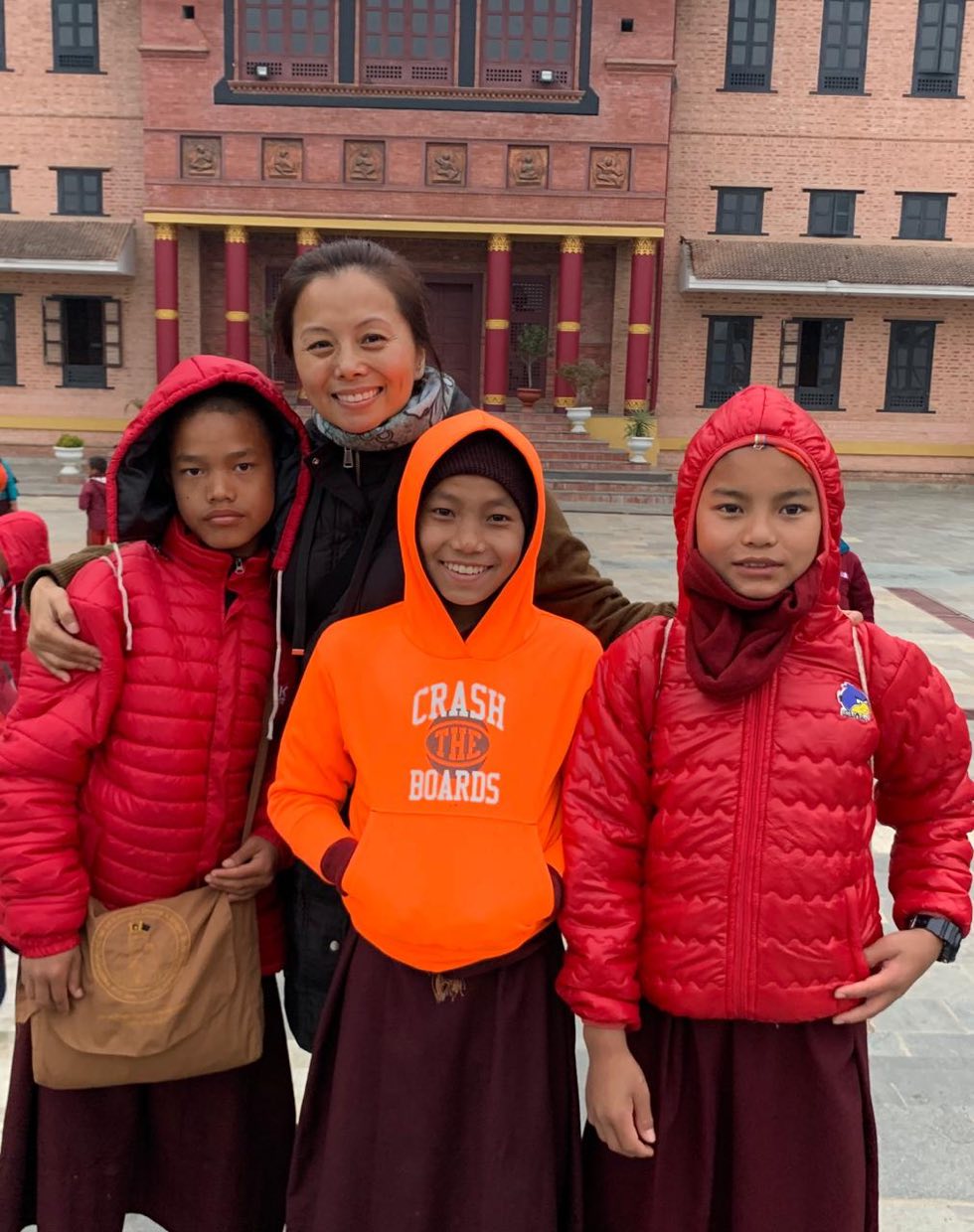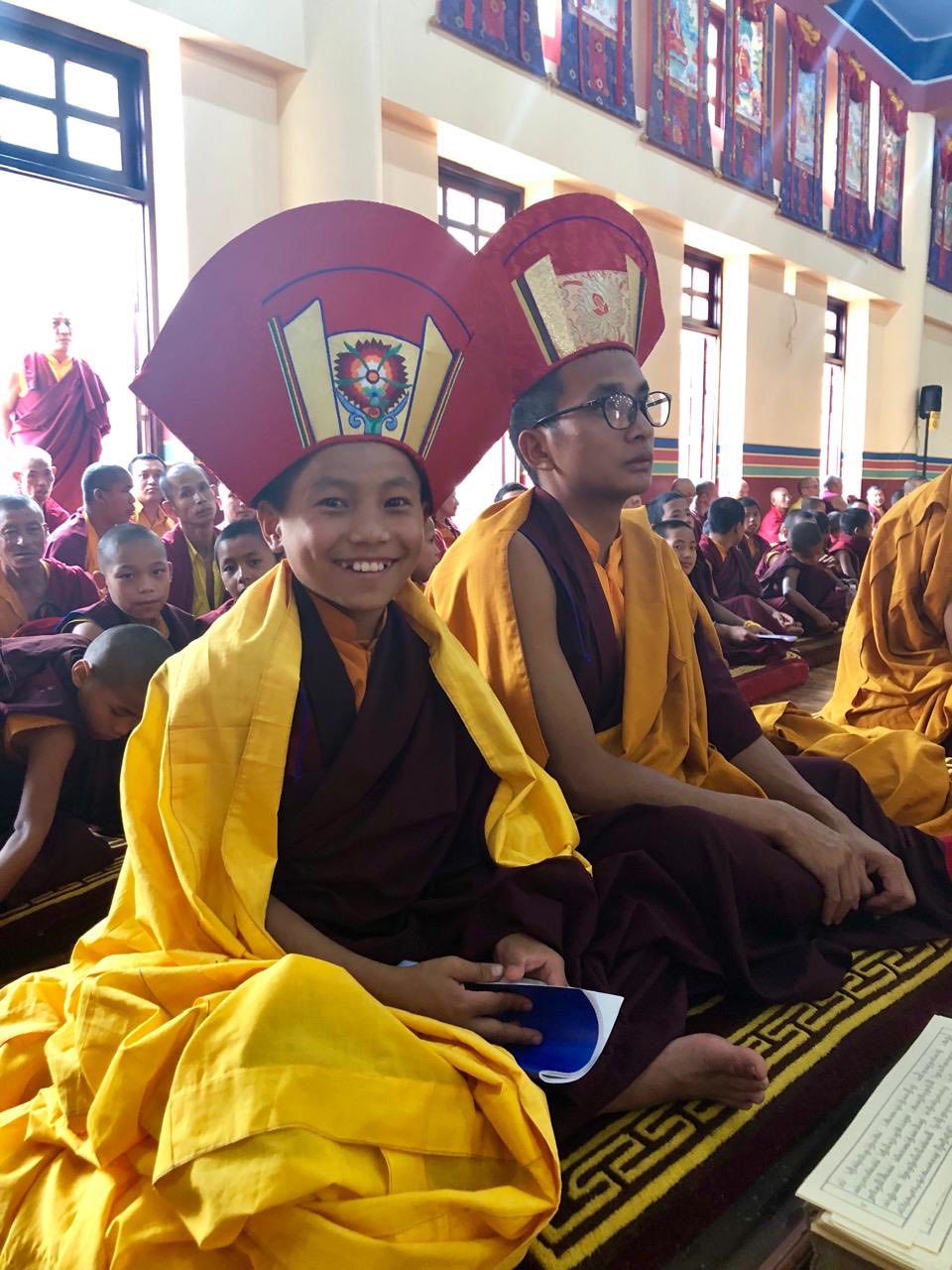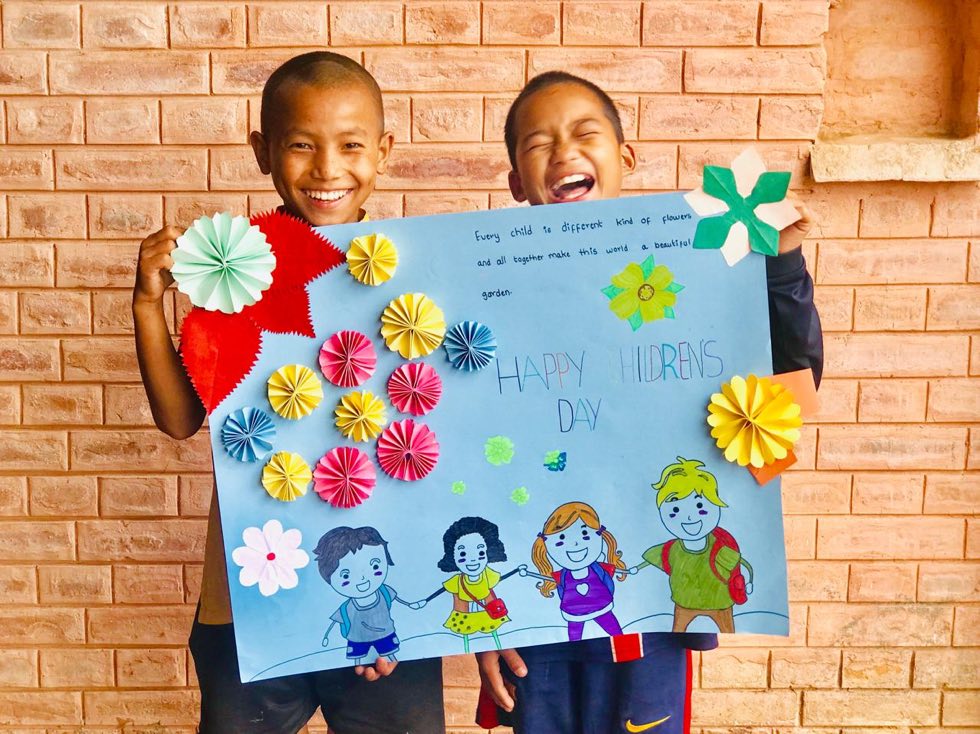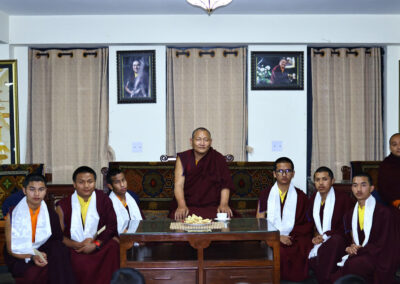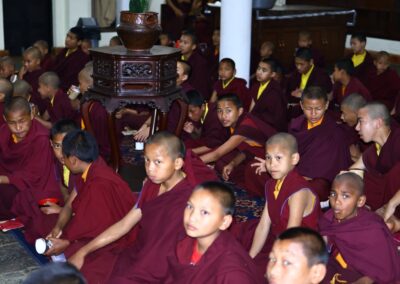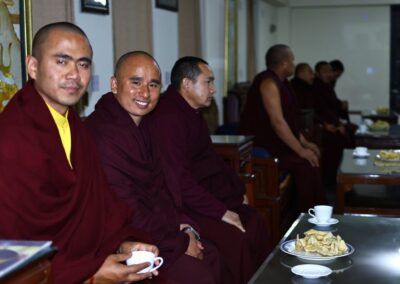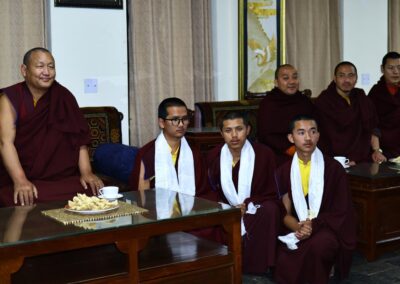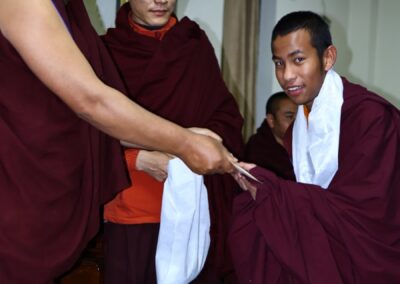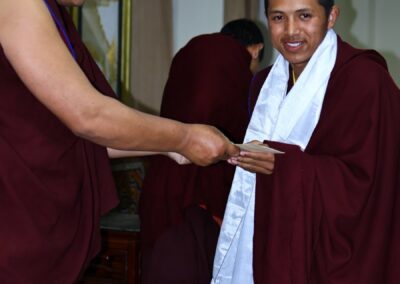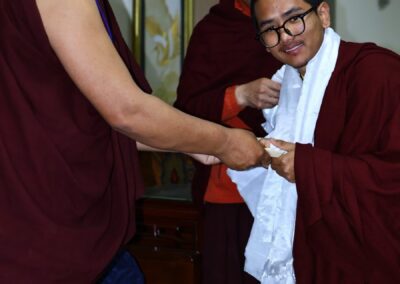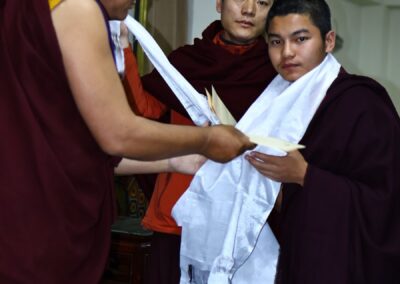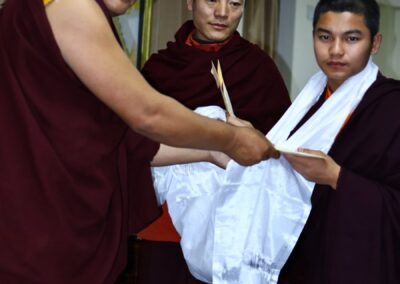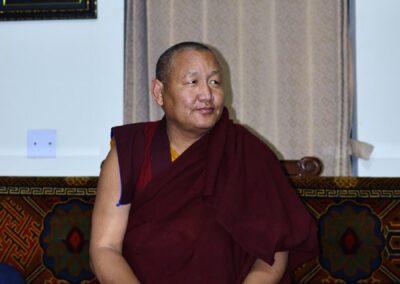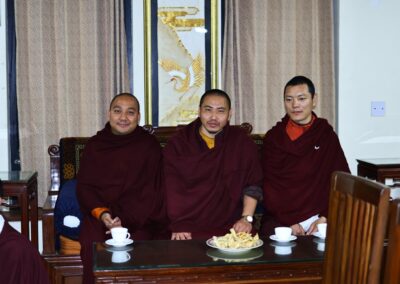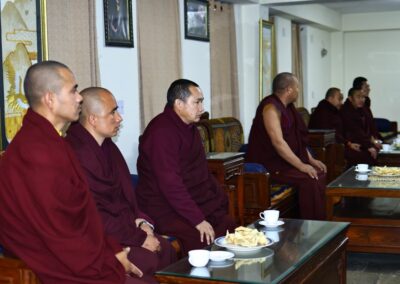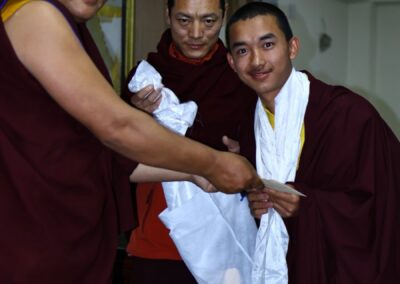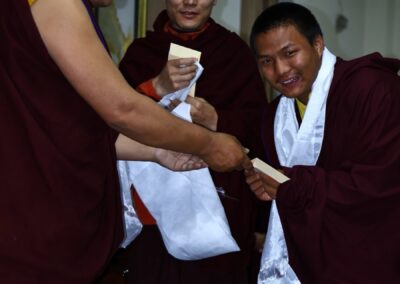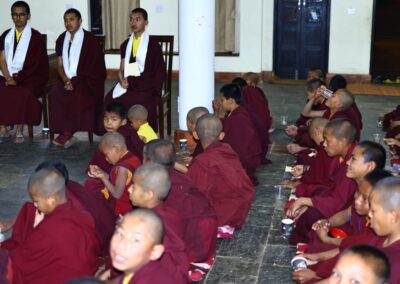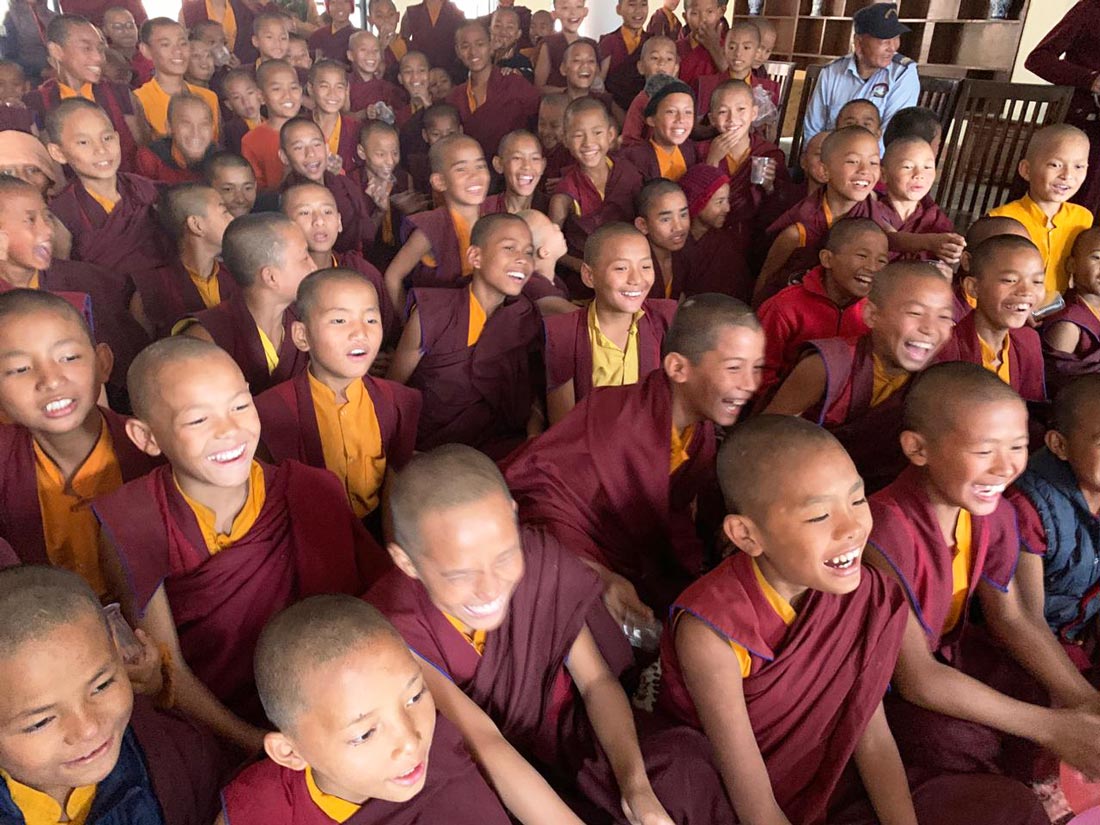Continuing Together on the Path of Wisdom
— Sherab Wangchuk,
Sharminub monk, now at Diwakar Buddhist Academy
Dear friends,
We wanted to begin this update with a few words from Sherab expressing his gratitude to you. Sherab joined Sharminub at the age of 8 and is now continuing his studies at Diwakar Shedra. Though he has never met the people who made this journey possible, he carries you in his heart as family.
With the blessing of the 17th Karmapa Trinley Thaye Dorje, the enduring vision of the 14th Kunzig Shamarpa, and the continued and patient guidance of Jigme Rinpoche, Sharminub has quietly grown into a place where Buddhist knowledge and the practice of compassion and wisdom are planted and cultivated.
As spring begins to unfold, we want to sincerely thank you for your ongoing support for the young monks at Sharminub. Your generosity and presence make it possible for these children to grow in knowledge, confidence, and purpose.

A Glimpse of the Journey: Sherab Wangchuk
“Then we arrived at the Sharminub Monastery (2016). At that time, a teacher welcomed us… After about an hour, my parents left. At that time, I didn’t cry outwardly, but inside my heart, I broke down in tears. I kept looking again and again at the place where my parents were going.”
“I am currently studying Madhyamaka-alamkara with Khenpo Rigzin. We are happy with this subject and go to class with enthusiasm.”
These reflections speak to the depth of transformation that takes place at Sharminub — and to the quiet power of your support. You can read his full interview below.
Full Interview with Sherab Wangchuk
1. Can you share your name and when you started at Sharminub?
My name is Sherab Wangchuk. I was eight years old when I first entered Sharminub Monastery. I completed my basic education there over a period of more than five years. I’m now 19 years old and currently studying at Diwakar Buddhist Academy (also known as Diwakar Shedra). It has been over five years since I arrived here, where I’m continuing my studies in Buddhist philosophy.
2. Can you share your earliest memory of arriving at Sharminub Monastery?
I don’t remember everything clearly. My father told me I should join the monastery to study Buddhism well and one day become a good Dharma teacher for our village. My mother said, “If you enter the monastery, you won’t face difficulties. Your future life will be happy.”
I remember my parents first taking me to Boudha Stupa in Kathmandu. Later, we arrived at Sharminub Monastery. A teacher welcomed us, though now I no longer remember who it was. About an hour later, my parents left. I didn’t cry outwardly, but inside, my heart broke. I kept looking again and again in the direction where they had gone.
3. What was the hardest part about adjusting to monastery life as a child?
I didn’t have any difficulty understanding the studies, following the monastery’s rules, or getting used to the food. The hardest part was when other monks’ parents came to visit them. I would often think how nice it would be if my parents could visit me too. I waited and watched for them every day. I missed my family a lot and cried many nights in bed. That was my biggest challenge.
4. How do you feel knowing that people from far away, who have never met you, have helped support your education and upbringing?
Although there is no blood relation between us, and I have never seen them, my heart feels very close to them. I see them as if they are my own family. I always pray for their happiness and for the happiness of their families. They are some of the most important people in my life, and I could never forget them. If I ever have the chance to meet them in person, I hope to express my genuine feelings openly and sincerely.
5. What subjects do you enjoy studying the most?
I am currently (2025) in the Madhyamaka (Middle Way) class. Of all the subjects I have studied so far, I enjoy Madhyamaka the most. These days, I am studying Madhyamaka-alamkara (Uma Gyen) with Khenpo Rigzin. His teaching methods are excellent, so we all go to class with enthusiasm. The Khenpos and teachers here are very skilled and teach with great care.
6. What are your hopes and dreams for the future?
I have two main hopes.
First, I hope to become a good person and complete my studies fully. If I succeed, I would like to become a Khenpo (abbot or senior scholar) and serve as a Dharma guide for many sentient beings.
Second, in line with my father’s wishes, I hope to return to my village and serve as a Dharma teacher for the local Buddhist community, helping with Dharma activities.
These are the main goals of my life.
7. Can you describe a typical day of studying and practicing as a young monk?
A Day in the Life of a Buddhist Monastery Student
Morning Routine
- 5:00 AM – Wake up, wash face, brush teeth
- 5:30–6:30 AM – Memorization of root texts
- 6:30–7:30 AM – Morning assembly with all monks, reciting prayers such as Praise to Manjushri and Praises to Tara
- 7:30–8:00 AM – Breakfast
- 8:00–9:00 AM – Madhyamaka (Middle Way Philosophy) class
Midday Activities
- 9:00–11:00 AM – Self-directed study
- 11:00 AM–12:00 PM – English class
- 12:00–1:00 PM – Lunch
- 1:00–3:00 PM – Focused study on assigned subjects
- 3:00–3:15 PM – Tea break
Afternoon and Evening Schedule
- 3:15–4:00 PM – Review lecture on Madhyamaka by the academic advisor
- 4:00–5:40 PM – Philosophical debate session (often observed by the abbot and teachers)
- 6:00–7:00 PM – Mahakala offering ceremony
- 7:00–8:00 PM – Dinner
- 8:00–9:30 PM – Private study in personal quarters
- 9:30–10:30 PM – Evening break and personal prayer time
- 10:30 PM – Lights out
This daily structure forms the foundation of our monastic education and spiritual practice.
A Joyful Milestone: Graduation to Higher Studies
Since 2018, a total of 30 young monks have completed their foundational studies at Sharminub and continued their journey at Diwakar Buddhist Academy in Kalimpong, India.
Earlier this month, the Sharminub community held a farewell tea ceremony for six students who are now beginning their next chapter at Diwakar Shedra.
Watching them step forward with confidence is a powerful reminder of what can grow from patient care and dedication. Your support has been like the work of a Tibetan artisan illuminating a sacred manuscript — slowly, attentively, and with reverence. And now, the beauty of that effort is taking form: young people grounded in values, walking the path of wisdom with purpose.
Coming Soon: Annual Report & Tax Receipts
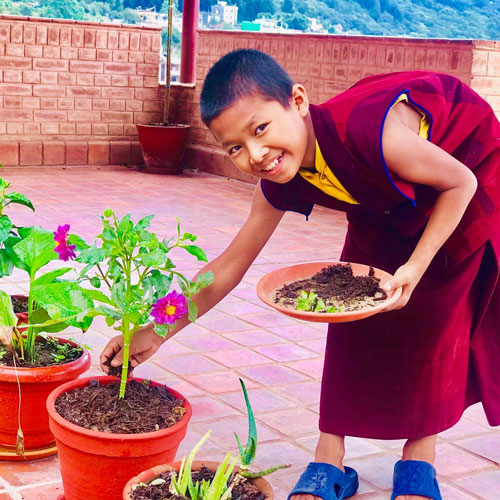
Tax receipts for all 2024 donations will also be sent by email within the next two weeks.

